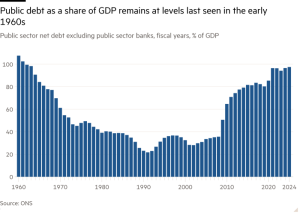2020 vision: Is there room for optimism on SA returns?


Image via Adobe Stock
This optimism is despite the very poor investor sentiment surrounding South African assets, and is grounded in the cheap valuations available to investors at the start of 2020.
Why equities and bonds look attractive
Our equity market in particular has been driven down to very cheap levels after some five years of disappointing returns. In fact, in 2019 it was the only market in the world to have de-rated in the face of consistently positive company earnings growth surprises. All other equity markets re-rated, some without the positive earnings news. Such market dynamics are highly unusual, telling us that negative market sentiment towards South Africa is the primary factor driving our market, overwhelming actual positive earnings results. However, we know that fundamentally, equity markets are driven by earnings growth over time, and eventually this will underpin our own market.
Looking at one equity valuation measure, South Africa’s 12-month forward Price-Earnings ratio (P/E) has been gradually falling since mid-2015, from over 16X to around 11X, a cheap level on an historic basis. Although earnings have been growing, share prices have been largely flat over that period, leading to a de-rating of the market.
Meanwhile, on a Price-Book Value (P/B) basis, South African equities started 2020 trading at 1.7X, far cheaper than their 2.1X historic average. Looking back at historic equity returns from this valuation point since 1980, on average investors have received subsequent five-year returns of 22% p.a., a handsome return. Of course there has been a wide range of results around this average over the 40-year period, from a low of around 7% p.a. to around 38% p.a. Still, current valuations are more in investors’ favour now to receive above-average returns, based on the probability distribution of future returns.
Finally, using a third valuation measure, that of Prudential’s analysis of asset class fair value over time, local equities are trading well below their long-term fair value, and could deliver a real return in the region of 8.0% p.a. over the next three to five years from their current valuation level. We do not know how or when these returns could be delivered, only that history says they are likely to be improved after such a unprecedently long period of equity underperformance relative to cash returns and versus its own history.
Equity performance is not the only area where we are cautiously optimistic – South Africa’s nominal bonds are also likely to provide very attractive returns over the next three to five years based on their current cheap valuations (low prices and elevated yields). Our 20-year government bond was offering a real yield of 4.5% at the start of 2020, a very high level that was reached only at the start of inflation targeting in 2000 and briefly again after the Global Financial Crisis (GFC) in 2008. This is 3.5% higher than the real yield on the 20-year US Treasury and 4.5% more than that offered by the 20-year German bund – the highest differentials since 2000.
This shows that there is currently an extraordinarily high risk premium built into our bond market, manifesting the very poor investor sentiment surrounding our assets. We believe the magnitude of this premium isn’t merited – certainly the country has been in worse circumstances, for example during the GFC. Also, our bond yields are higher than those in other emerging markets with poorer credit ratings and more serious issues than ours, such as Venezuela, Argentina, Turkey and Indonesia. Based on Prudential’s long-term fair value analysis, we would expect South African bonds to deliver a real return in the region of 3.9% p.a. over the next three to five years.
We remain cautious on SA listed property
For South African listed property, however, our view is much more cautious. Going into 2020, this sector is certainly valued at attractive levels, with our valuation analysis pointing to a prospective real return of around 8.4% p.a. over the next three to five years. Despite this, we are concerned about the earnings outlook for listed property companies, as they face ongoing headwinds from pressure on landlords to reduce their rentals, particularly in the retail space where retailers are grappling with sluggish consumer spending. Equally, oversupply in office space is negative for listed property earnings currently. We consider earnings expectations to be vulnerable to disappointments, and as such we are underweight in listed property in many of our client portfolios.
Opportunities abroad
Turning to global investments, we do still see opportunities for good returns from global equities despite their strong performance in 2019, particularly when viewed against global bonds. Global equities (as represented by the MSCI All Country World Index (ACWI) are trading on a P/B ratio of 2. 6X. Although this is not absolutely cheap based on their history, they are offering an earnings yield of around 6.0%, which is very attractive compared to the 0% real yield from US Treasuries and the -2.0% real yield from German bunds. We believe US equities are expensive, and that better opportunities exist – particularly in emerging market equities, which have underperformed the US market for several years. In contrast, we are avoiding developed market government bonds with near-zero to negative real yields, and prefer to hold US and European corporate bonds.
In conclusion, we would urge investors not to be caught up in the very pessimistic sentiment surrounding South African assets at the start of 2020. In fact, valuations across most of our local asset classes are cheap relative to offshore assets and based on their own history. At Prudential, we have been taking advantage of this opportunity by adding to our client portfolios where appropriate, and we would encourage investors with longer-term timeframes, like pension funds, to consider this as well.
For more information, please speak to your financial adviser or feel free to contact our Client Services team on 0860 105 775 or email us at [email protected].
Contact Prudential using the form below:







